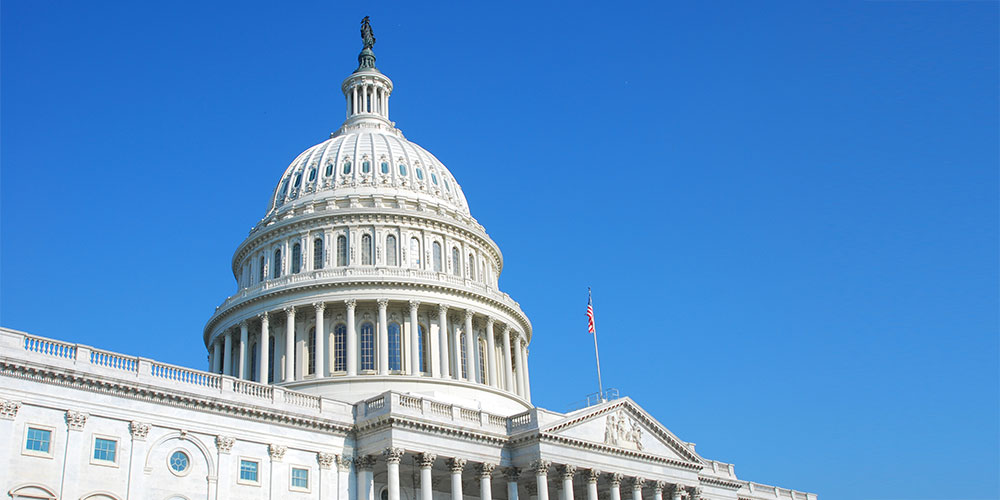Every state in the U.S. requires school attendance for minors. It’s easy to understand why: An education goes a long way toward promoting a child’s developmental, social, and economic success, and our society as a whole benefits when its citizens can communicate and contribute at high levels.
Despite the states being united in the desire to educate America’s children, there’s no federal right to education. Yes, there’s a U.S. Department of Education, and bills such as the No Child Left Behind Act and the Every Student Succeeds Act have set educational standards and made federal funding available for K–12 schooling. Yet the means, mode, and regulation of education are largely left up to state and local governments, meaning that a kid’s school experience depends largely on where he or she lives.
Let’s dust off our federalism hats and look at the potential implications and drawbacks of enshrining a federal right to education into the Constitution.
Defining a Federal Right to Education
Much ink and many hours of court cases have been dedicated to defining, clarifying, and debating the particulars of current Constitutional guarantees, such as the rights to speak freely, bear arms, receive due process, etc. However, even among legal experts, there’s no singular definition for the idea of a “federal right to education.” To summarize some of the past court cases and movements advocating for it, we might define a federal right to education as:
The right of all American children to a high-quality, equal education regardless of race, income, location, etc., guaranteed by the U.S. Constitution
As of 2021, the U.S. Constitution and its amendments do not specifically mention education, which is why (per the Tenth Amendment) the states are in charge of providing and regulating schooling. A federal right to education could be added to the Constitution via ratifying a new amendment. However, most attempts at enshrining this right have come through the court system.
The most notable court case regarding a federal right to education came about in 1973, when a suit out of Texas made its way to the Supreme Court. In San Antonio Independent School District v. Rodriquez(Open Link in new tab), parents from the low-income, predominately Hispanic Edgewood district argued that it was discriminatory for their schools to receive only $37 per pupil while the wealthier Alamo Heights neighborhood received $413 per student.
A three-judge panel in Texas agreed with the parents and went a step further by calling education a fundamental right, citing the Equal Protection Clause of the 14th Amendment. However, when the State of Texas appealed to the U.S. Supreme Court, the justices delivered a 5–4 decision overturning the Texas judges’ words. The majority opinion asserted that Texas had not violated its constitution and that education is not a fundamental right.
A Tale of Two Schools: The Pros of a Federal Right to Education
The idea of equity is not new to K–12 education. We all want students to reach the same levels of academic achievement, but a single day in the classroom will show you that some students need more time and resources to meet educational standards than others. The same holds true on a national scale: Some districts perform significantly better than others. So, it stands to reason that additional resources should go to struggling schools…right?
However, all too often, the inverse of this principle seems to hold true. In other words, funding often goes to already high-performing schools while low-income, low-performing schools languish without assistance.
Take Elgin, Illinois, for example. According to the Hechinger Report(Open Link in new tab), 2019 state tests showed that not one of the third graders at Ronald D. O’Neal Elementary were reading and writing at grade level. The school’s population tells at least part of the story: 90 percent of children come from low-income households, and nearly 75 percent are English language learners. Both of these demographics have historically demonstrated difficulties with English language arts education.
Meanwhile, Centennial Elementary School, located just nine miles away, has a student population of 20 percent low-income families and 17 percent English language learners. In 2019, nearly 75 percent of their third graders passed the state reading and writing test standards.
The differences in demographics and test scores aren’t the only things separating these two schools. Centennial—the higher-performing school—received $1,465 more per student in state and local funding than the struggling O’Neal, a difference of $789,905 per year.
Such disparities are at the heart of the arguments in favor of a constitutional right to education. Right now, nearly half(Open Link in new tab) of educational funding comes from local property taxes. Obviously, districts populated by lower income earners will have lower tax revenues, leading to lower available funds for schools. That means children from these areas, by virtue of where they’re born, are less likely to receive a quality education.
Under a federal right to education, schools would be funded in a more equitable fashion, meaning that resources would be guaranteed to go to districts where students are struggling to perform to national standards. Thus, students from impoverished zip codes would have a better chance at receiving access to the same technology, quality instruction, extracurriculars, IEP support, and other resources often enjoyed predominately by schools in wealthier districts.
Constitutional Right to Education: The Cons
Although a constitutional right to education could potentially guarantee certain levels of funding and educational standards across the country, many argue that there could be unintended consequences to regulating education at the federal level. The United States is a large and diverse country. States and cities have different prominent industries and cultural concerns, and these differences can impact the type of education most needed or valued in a given region. If all decisions come from a federal level, schools would have a harder time accounting for these differences in their curricula.
SchoolandState.com(Open Link in new tab) summarizes some of the arguments against the federal government taking over the regulation of public schooling:
- Decreased diversity and autonomy in education: Just like any other industry, education is constantly growing and evolving. Innovations don’t always come from those at the top of the educational pyramid; sometimes, the best ideas come from individual districts, schools, and classroom teachers. If every school had to abide by the same federal rules, this might stifle educators’ creativity and ability to try something new, leading to less individuality and risk taking.
- Potentially lowered standards in the pursuit of equality: Every teacher has experienced the challenge of educating kids of different abilities in the same classroom. You don’t want to leave struggling students behind, but you also don’t want to keep gifted students from reaching their potential. Those who support more local control of education are concerned that centralized regulation will exacerbate this challenge to a national scale. They worry, for example, that instead of raising up struggling rural or inner-city schools, high-performing districts will stagnate as other schools try to catch up.
- Risk of political change and activism disrupting education: There’s no doubt that politics already impacts our current educational system—often more than parents or educators want. The benefit of state- and local-led schools is that they have a better chance of mitigating the influence of nationwide elections, lobbying groups, and transitory, hot-button political movements. In other words, if local communities have more control than federal bodies, schools have a better chance of protecting kids from sweeping changes or activism based on the results of one federal election cycle.
- Diminished parental and community influence: No one has a greater interest in or responsibility for a child’s education than his or her family. Although many caregivers are unable to educate their children personally, they trust schools to teach and care for their children in a way that supports how they’re raising them at home. When localities are in charge of K–12 education, families have more opportunities to voice their feedback and be involved in decision-making processes. Centralized regulation would diminish families’ roles in their children’s education.
- Mismatch with American founding values: The Constitution (and American law generally) favors a more decentralized approach to governance. The Tenth Amendment, as mentioned above, states that any power not specifically granted in the Constitution should be reserved for the states, allowing for more independence and localized decision-making. A federal, one-size-fits-all approach to education may undermine the spirit of freedom and exploration woven through America’s founding principles.
So, should there be a constitutional right to education? For teachers and school leaders across the country, the way forward is the same regardless of what happens in the political realm: We’ll keep showing up and giving our best for our students regardless of the challenges or resources available.







